
The Historic Slave Tree: A Symbol of Resilience
Explore the Slave Tree in Ndola, a powerful symbol of resilience and history, offering insights into Zambia's heritage and the journey towards freedom.
The Slave Tree in Ndola stands as a poignant reminder of history, offering visitors a unique glimpse into the past. This remarkable tree, with its impressive stature, has witnessed countless events and is a significant landmark for those exploring the region's rich cultural heritage. As you visit, take a moment to reflect on the stories it holds and the resilience of the people who have lived through such challenging times.
A brief summary to Slave tree
- 2JCX+763, Makoli Ave, Ndola, Kanini, ZM
Local tips
- Visit early in the morning or late afternoon to avoid the heat and enjoy a more peaceful experience.
- Take a guided tour to gain deeper insights into the historical significance of the Slave Tree.
- Bring a picnic to enjoy in the serene surroundings after exploring the area.
- Wear comfortable shoes, as the area around the tree can be uneven and requires some walking.
- Respect the site and its history by maintaining cleanliness and refraining from climbing the tree.
Getting There
-
Walking
If you are in the central area of Kabushi, start by heading towards Makoli Avenue. You can ask locals for directions to Makoli Avenue if you are unsure. Once you reach Makoli Avenue, continue walking straight for approximately 15-20 minutes. The Slave Tree is located at the coordinates 2JCX+763, which will be on your right side as you walk along the avenue. Look for a large tree, as this is the landmark you are searching for.
-
Bicycle
If you are comfortable riding a bicycle, you can rent one from a local shop in Kabushi. Once you have a bike, head towards Makoli Avenue. Follow the same route as if walking, but on a bicycle, the trip should take about 10-15 minutes. Keep an eye out for the large tree on your right as you approach the coordinates 2JCX+763.
-
Public Transport (Minibus)
Look for a minibus heading towards Ndola Central. You can board the minibus at a local bus stop. Inform the driver you are going to Makoli Avenue. The fare is usually around ZMW 5-10. Once you arrive near Makoli Avenue, disembark and walk towards Makoli Avenue. Continue walking for about 5-10 minutes, and you will see the Slave Tree on your right at the coordinates 2JCX+763.
Discover more about Slave tree
Iconic landmarks you can’t miss
Leeja Palace Restaurant & Bar
0.5 km
Savor the authentic taste of India at Leeja Palace Restaurant & Bar in Ndola, where every dish is a culinary delight.

Hungry Lion Ndola
0.5 km
Experience the ultimate fast food delight at Hungry Lion Ndola, where crispy fried chicken meets a vibrant atmosphere in the heart of Zambia.

Miles And Places
0.8 km
Discover the best of Zambia with Miles And Places, your trusted travel agency for unforgettable adventures and cultural experiences in Ndola.

Monument
0.8 km
Explore the Monument in Ndola, a historical landmark that embodies Zambia's rich heritage and vibrant culture, inviting tourists to delve into its storied past.

Hungry Lion Kafubu
0.9 km
Experience the vibrant taste of Zambia with delicious fried chicken and quick service at Hungry Lion Kafubu in Ndola.

Roman's Pizza Ndola
0.9 km
Delight in delicious pizzas and fast service at Roman's Pizza Ndola, your go-to spot for a quick and satisfying meal in Zambia.

Bo'Jangles Pub Grill & Pizzeria
0.9 km
Experience the vibrant flavors of Zambia at Bo'Jangles Pub Grill & Pizzeria, where delicious dishes and a lively atmosphere await in Ndola's Kafubu Mall.

Copper Canyon Spur
0.9 km
Discover the ultimate steak dining experience at Copper Canyon Spur, a family-friendly restaurant in Ndola, combining African flavors with a vibrant atmosphere.

Ndola Bowling Club
1.0 km
Discover Ndola Bowling Club, a vibrant community hub offering bowling, drinks, and a taste of local social life in Ndola, Zambia.

Leonidas Restaurant & Lounge
1.1 km
Experience the essence of Zambian cuisine at Leonidas Restaurant & Lounge, where delicious flavors meet inviting ambiance in Ndola.

Deja vu restaurant
1.3 km
Savor the unique flavors of Zambia at Deja Vu Restaurant in Ndola, where culinary excellence meets a warm, inviting atmosphere.

Ndeke
1.3 km
Explore the lively Ndeke Market in Ndola for an authentic taste of Zambian culture, food, and unique handicrafts.

Kafubu mall
1.3 km
Discover the flavors of Ndola at Kafubu Mall, where delightful bakeries and vibrant shopping await every visitor.

Mint Café Ndola
1.3 km
Experience the flavors of Zambia at Mint Café Ndola, where every meal is a celebration of local cuisine and warm hospitality.

The Urban Hotel Ndola
1.3 km
Experience the perfect blend of comfort and modern amenities at The Urban Hotel Ndola, your ideal retreat in Zambia's Copperbelt region.

Unmissable attractions to see
Copperbelt Museum
1.1 km
Explore the Copperbelt Museum in Ndola for an insightful journey into Zambia's mining history and cultural heritage.

Eden farm
1.3 km
Discover the tranquil beauty of Eden Farm in Ndola, a perfect escape for nature lovers and families alike, surrounded by vibrant flora and serene landscapes.

Heaven palace
1.3 km
Experience the enchanting beauty and cultural richness of Heaven Palace in Ndola, a serene escape for nature lovers and cultural enthusiasts alike.

Muzi
1.3 km
Discover the tranquil beauty of Muzi, a serene garden in Ndola that offers a perfect escape for nature lovers and peace seekers alike.

Bethsaida
1.3 km
Explore the tranquil beauty of Bethsaida Park in Ndola, Zambia—your perfect getaway to nature, relaxation, and local culture.
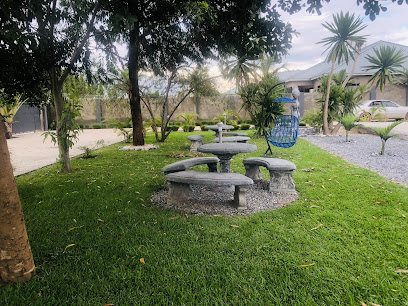
Waterfront Events Centre
1.4 km
Experience the beauty and culture of Ndola at the Waterfront Events Centre, a perfect park for relaxation, events, and local gatherings.

The Oak Garden
1.5 km
Discover tranquility at The Oak Garden in Ndola, a serene oasis perfect for nature lovers and those seeking peaceful retreats.

Itawa Spring
2.7 km
Discover the serene beauty of Itawa Spring, Ndola's tranquil garden oasis, perfect for relaxation and nature appreciation.

Kabushi
3.6 km
Explore the serene beauty of Kabushi Garden in Ndola, a perfect escape into nature with lush greenery and vibrant flora.

Kalewa swimming pool
3.9 km
Discover the tranquility of Kalewa Swimming Pool in Ndola, where relaxation meets nature in a beautiful garden setting.
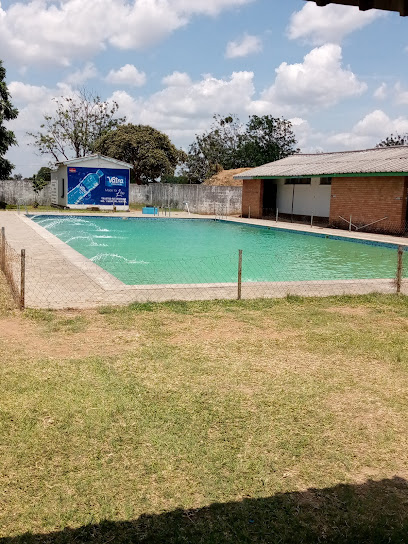
Dola Hill Lying Dragon Game Centre
4.4 km
Discover endless fun at Dola Hill Lying Dragon Game Centre in Ndola, where families create unforgettable memories with exciting games and attractions.

Trade Fair Grounds
4.9 km
Discover the vibrant culture and lively atmosphere of the Trade Fair Grounds in Ndola, a must-visit destination for every traveler.

Virgin Mary Grotto
5.0 km
Discover tranquility and spiritual beauty at Virgin Mary Grotto, a serene park in Ndola perfect for relaxation and reflection amidst lush greenery.

Megatron's Encase
5.7 km
Experience tranquility and natural beauty at Megatron's Encase, a stunning garden escape in Ndola, Zambia, perfect for relaxation and exploration.

Ishiku Sunken Lake
7.0 km
Experience the serene beauty of Ishiku Sunken Lake, a tranquil oasis in Ndola, perfect for relaxation and outdoor adventures in Zambia.

Essential places to dine
Father's Restaurant
0.4 km
Discover the heartwarming flavors of Zambia at Father's Restaurant, where families gather for delightful meals in Ndola.

De Jong Restaurant
0.7 km
Discover authentic Zambian flavors at De Jong Restaurant in Ndola – where culinary excellence meets local charm.

Sweet Bite
0.8 km
Discover Sweet Bite in Ndola - where local flavors meet international cuisine in a warm and inviting atmosphere.

Fourways Pub & Grill (4Ways Pub & Grill
1.0 km
Experience authentic Zambian flavors at Fourways Pub & Grill in Ndola—perfect for families and friends looking for delightful local cuisine.
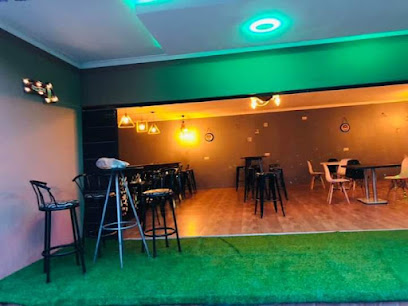
Arabian Bites
1.1 km
Experience authentic Middle Eastern cuisine at Arabian Bites in Ndola—where every dish tells a story and every bite is an adventure.

Mixed Doubles
1.1 km
Discover the vibrant culinary scene at Mixed Doubles in Ndola, where local flavors meet international cuisine for an unforgettable dining experience.

Grand Pa's
1.1 km
Experience authentic Zambian flavors at Grand Pa's in Ndola – where every meal is a celebration of local cuisine and warmth.

The Chill Spot
1.1 km
Experience vibrant dining at The Chill Spot in Ndola – where delicious grilled flavors meet a welcoming atmosphere.

THE SPACEMAN PUB N GRILL
1.1 km
Experience the vibrant flavors of Zambia at The Spaceman Pub N Grill in Ndola, where local cuisine meets lively entertainment.

Zebra bar and grill
1.2 km
Discover the vibrant flavors of Zambia at Zebra Bar and Grill in Ndola, where local cuisine meets international flair in a lively atmosphere.

Rumi's Restaurant and Café
1.3 km
Experience the vibrant flavors of Zambia at Rumi's Restaurant and Café in Ndola, where culinary excellence meets warm hospitality.

Rami's Restaurant
1.3 km
Experience authentic Zambian flavors at Rami's Restaurant in Ndola - where every meal tells a story.

La Piazzetta - Ndola
1.3 km
Experience authentic Italian flavors at La Piazzetta in Ndola - where every pizza tells a story.

Barbeque Tonight
1.4 km
Discover the rich flavors of Ndola at Barbeque Tonight – your go-to destination for mouth-watering grilled meats and authentic Zambian hospitality.

The Town Restaurant Ndola
1.5 km
Discover Ndola's vibrant culinary scene at The Town Restaurant, where local flavors meet global influences in an inviting atmosphere.

Markets, malls and hidden boutiques
REKAY'S FARMING AND BUILDING SUPPLIES LTD
0.4 km
Explore Ndola's local hardware haven, Rekay's Farming and Building Supplies Ltd, featuring quality products and exceptional service.

BBC One Collection
0.5 km
Discover the BBC One Collection in Ndola, a vibrant shopping mall offering a variety of shops, dining, and cultural experiences.

OK Furniture Ndola
0.5 km
Explore OK Furniture Ndola for stylish and affordable furniture! Discover unique home decor options that reflect your personal style.

Z-MART Stores · Ndola
0.5 km
Discover Z-MART Stores in Ndola for a unique shopping experience with a variety of home goods and local souvenirs, all in a welcoming atmosphere.

Heaven seven bottle shop ndola
0.5 km
Explore an exquisite selection of global wines at Heaven Seven Bottle Shop in Ndola, where quality and service come together for an unforgettable experience.

Mud botique
0.5 km
Explore the essence of Zambian style at Mud Boutique in Ndola, where unique fashion meets local craftsmanship.

BBC1
0.5 km
Explore BBC1 in Ndola, where contemporary fashion meets local culture in a vibrant clothing store experience.

Shoprite Ndola
0.6 km
Discover a world of groceries and local delights at Shoprite Ndola, Zambia's favorite supermarket destination for travelers and locals alike.

JET Z MALL NDOLA ZAMBIA
0.6 km
Experience the vibrant fashion scene at JET Z Mall in Ndola, where trendy clothing meets affordability in a lively shopping atmosphere.

Z-MART Shopping Mall
0.6 km
Discover endless shopping and entertainment at Z-MART Shopping Mall in Ndola - your ultimate shopping destination in Zambia.

Gods Own Boutique
0.6 km
Explore God's Own Boutique in Ndola for a unique blend of Zambian culture and contemporary fashion, perfect for every style enthusiast.

Yalelo Ndola - Downtown 1 Store
0.7 km
Discover a world of vibrant aquatic life at Yalelo Ndola, your premier tropical fish store in the heart of Ndola, Zambia.
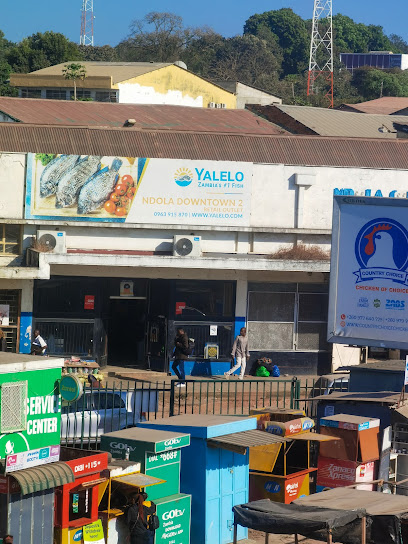
Denkusu Fashion collection Ndola
0.7 km
Discover unique Zambian styles at Denkusu Fashion Collection, Ndola's premier clothing store, offering a blend of tradition and modern fashion.

ck's online store
0.7 km
Discover trendy clothing and exceptional service at CK's Online Store in Ndola, a must-visit fashion destination for tourists and locals alike.

R & F Boutique
0.8 km
Explore the latest fashion trends at R & F Boutique in Ndola's City Mall, a must-visit destination for every style-savvy traveler.

Essential bars & hidden hideouts
The Hotspot Pub & Grill
0.5 km
Experience the vibrant atmosphere and local flavors at The Hotspot Pub & Grill in Ndola, your go-to destination for food and fun.

Eddie's pub
0.9 km
Experience vibrant nightlife and local culture at Eddie's Pub in Ndola, Zambia, where friendly faces and great drinks await.

Longhorn Bar
1.1 km
Discover the lively spirit of Ndola at Longhorn Bar, where refreshing drinks and a friendly atmosphere await every traveler.

RJ's Executive Pub
1.1 km
Experience the vibrant nightlife of Ndola at RJ's Executive Pub, where locals and tourists gather for great drinks and unforgettable moments.

Blue sting pub and grill
1.1 km
Experience the vibrant nightlife at Blue Sting Pub and Grill, Ndola's go-to bar for drinks, live music, and local flavor.

Dag H Pub
1.3 km
Experience the vibrant energy of Dag H Pub, Ndola's premier sports bar, where great food, drinks, and live sports come together.

The Tipsy crow bar
1.4 km
Experience the vibrant nightlife of Ndola at The Tipsy Crow Bar, where great drinks and a friendly atmosphere await.

man kid nite club
1.7 km
Discover the vibrant nightlife at Man Kid Night Club in Ndola, where local music meets contemporary beats in an unforgettable atmosphere.

Pa Khuma
1.7 km
Discover the lively spirit of Ndola at Pa Khuma, a bar that offers a unique blend of local charm and modern comfort in the heart of Zambia.

Spades Bar
2.1 km
Explore Ndola's nightlife at Spades Bar, where great drinks and vibrant entertainment create unforgettable evenings in Zambia.

The Complex(hideout)
2.2 km
Experience the vibrant nightlife at The Complex in Ndola, where great drinks and local culture come together.

berc
2.5 km
Discover Berc, a cozy bar in Ndola, Zambia, where locals and tourists alike gather for drinks and good times in a relaxed atmosphere.

Muchis
2.9 km
Experience vibrant nightlife at Muchis, a bar in Ndola renowned for cool drinks and delicious braai'd fish, blending local culture and cuisine.

Volo Bar
2.9 km
Discover the lively ambiance of Volo Bar in Ndola, where locals and tourists come together for unforgettable nights filled with drinks, music, and laughter.
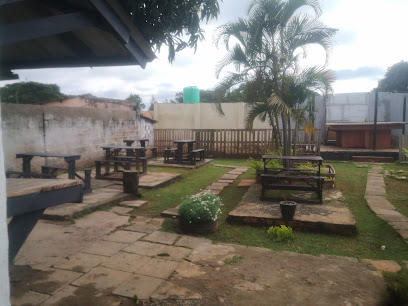
M & M pub and Grill
3.1 km
Discover the vibrant atmosphere of M & M Pub and Grill in Ndola, where local flavors meet lively entertainment for an unforgettable night out.




